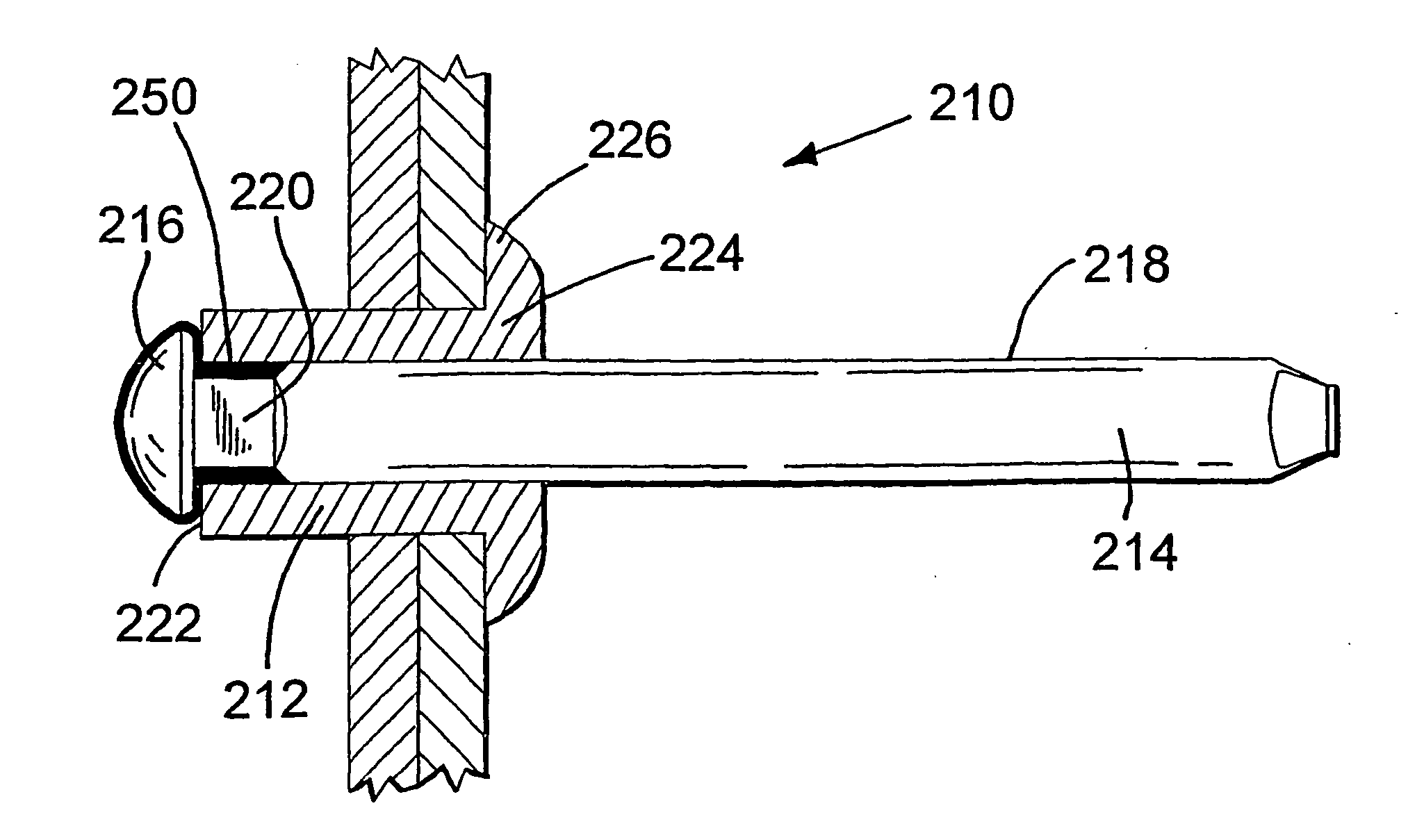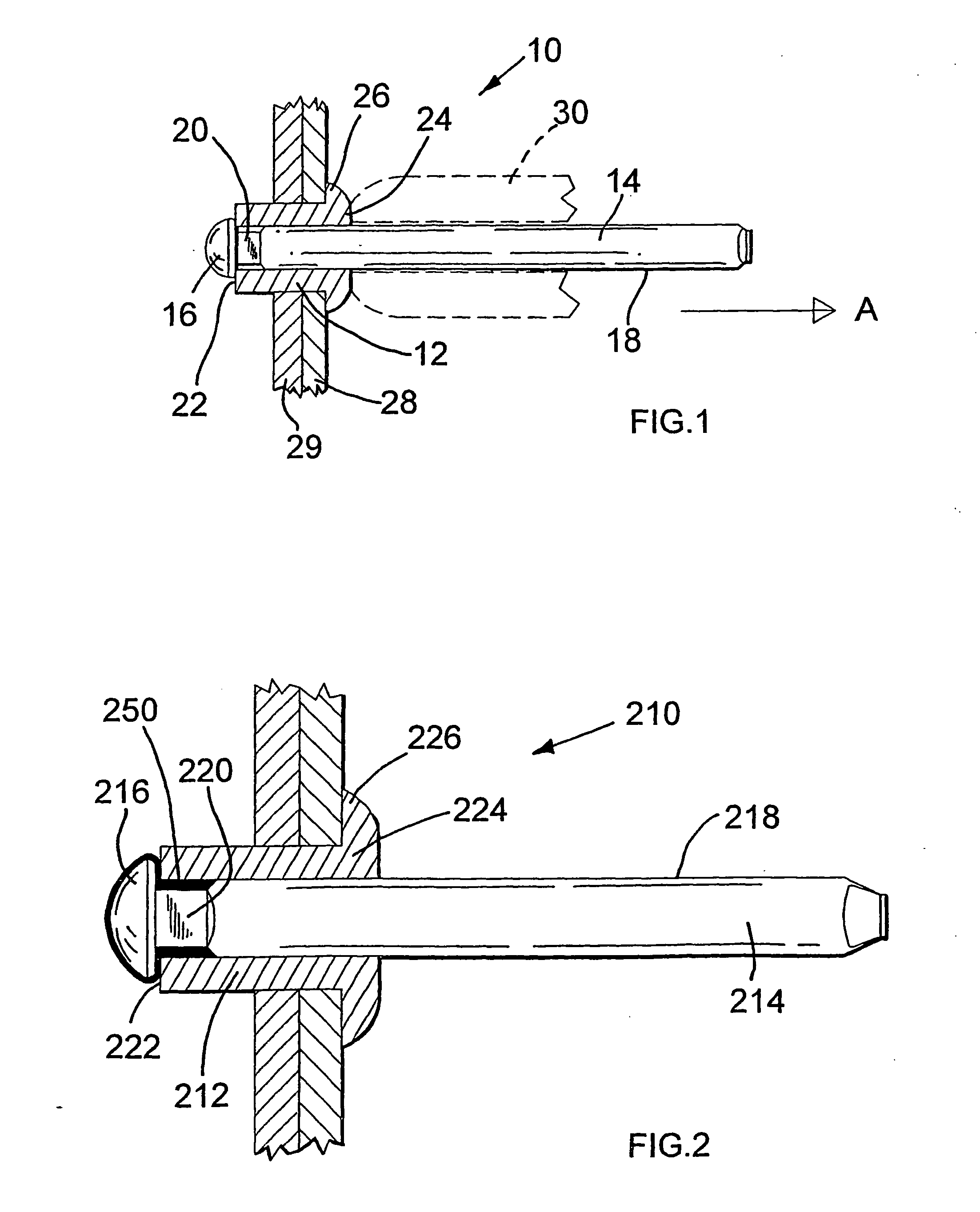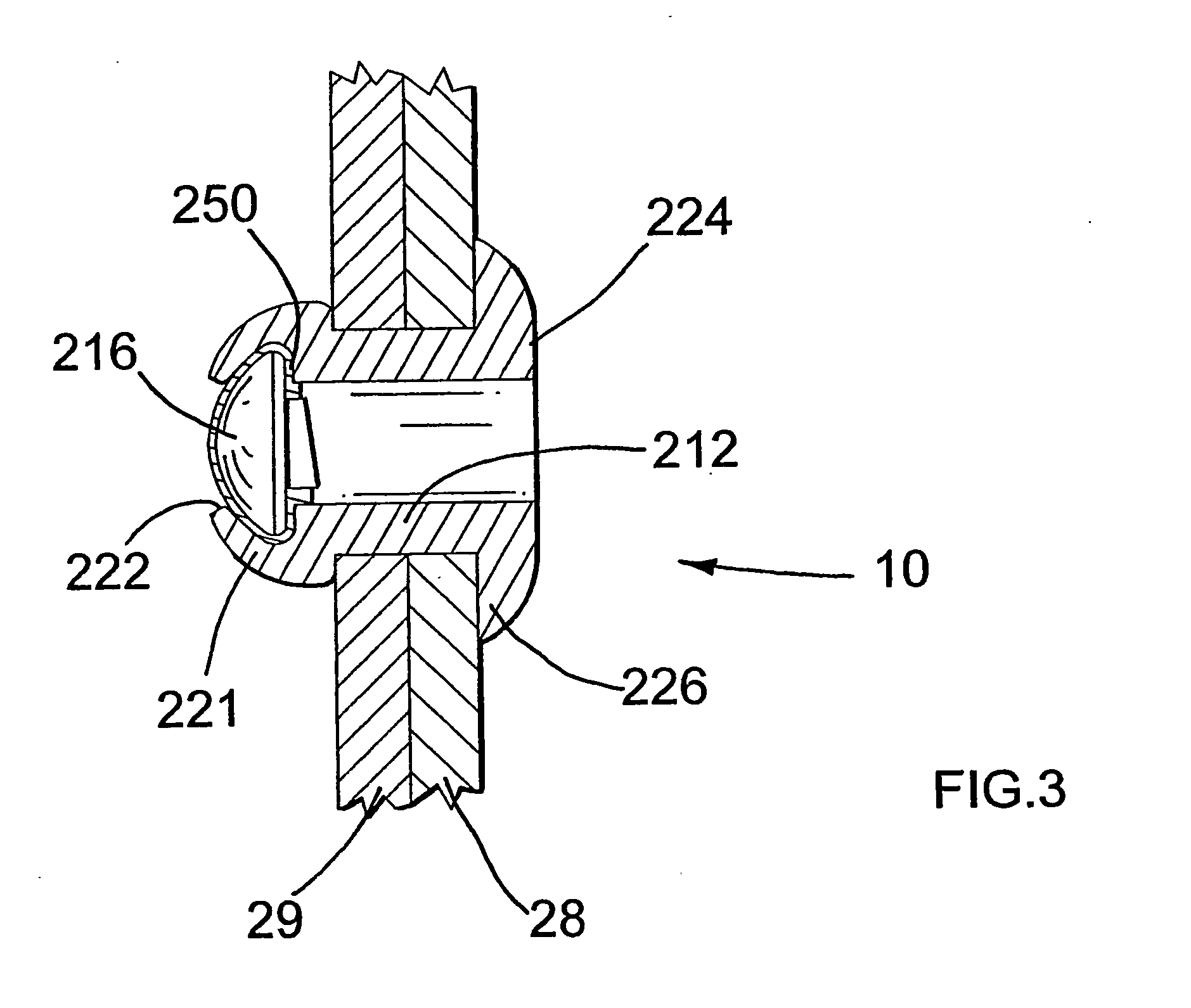Blind rivet with steal
- Summary
- Abstract
- Description
- Claims
- Application Information
AI Technical Summary
Benefits of technology
Problems solved by technology
Method used
Image
Examples
Embodiment Construction
[0017] Referring now to FIG. 1, a conventional open-end blind rivet 10 comprises a substantially hollow tubular rivet body 12 and an associated mandrel 14. The mandrel is substantially an elongate cylindrical metal wire (although alternative embodiments for plastics rivets could employ plastics mandrels) having disposed at one end and coaxial therewith, a mandrel head 16 having a diameter greater than the mandrel wire. Disposed between the main body 18 of the mandrel 14 and the mandrel head 16 is a mandrel shank 20, again coaxial with body 18 but having a diameter less than then the diameter of the body 18. Thus the mandrel shank provides a narrowed neck portion of the mandrel as clearly seen in FIG. 1.
[0018] The cylindrical rivet body 12 has an inner diameter substantially equal to the diameter of the mandrel body 18 whereby the mandrel 18 can be fed through the rivet body 12 (in a direction substantially shown by arrow A in FIG. 1) until the head 16 engages with an end surface 22...
PUM
 Login to View More
Login to View More Abstract
Description
Claims
Application Information
 Login to View More
Login to View More - R&D Engineer
- R&D Manager
- IP Professional
- Industry Leading Data Capabilities
- Powerful AI technology
- Patent DNA Extraction
Browse by: Latest US Patents, China's latest patents, Technical Efficacy Thesaurus, Application Domain, Technology Topic, Popular Technical Reports.
© 2024 PatSnap. All rights reserved.Legal|Privacy policy|Modern Slavery Act Transparency Statement|Sitemap|About US| Contact US: help@patsnap.com










